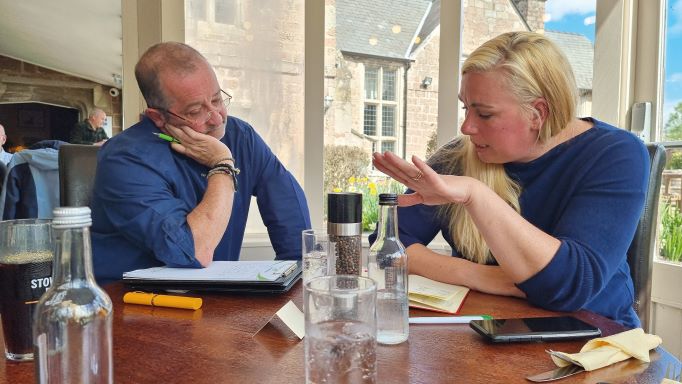Choosing the right water treatment products is vital to achieving the best results
This article first appeared in the Poultry Health supplement to Poultry Business
A broiler farm in Herefordshire with 120,000 broilers across four houses is managed by the highly experienced Julia Mather. Mather was concerned about the water quality on her farm and had a discussion with her veterinarian from Poultry Health Services, who recommended Huwa-San TR-50 – Advanced Silver Stabilised Hydrogen Peroxide – to treat the drinking water.
The farm was originally using chlorine tablets to treat the drinking water but experienced problems with stability and effectiveness. This resulted in little to no disinfectant present in the water on a daily basis and water testing results that were not satisfactory.
“The water quality was OK but not very clean – hence the reason to look at something different,” says Mather. It is common knowledge that bacteria and biofilm can grow unchecked if drinking water isn’t thoroughly cleaned and also regularly tested for microbiological purity. If the water quality is not of a high standard, then there is a potential for the birds drinking this water to be adversely affected.
The transmission of bacteria, viruses, or protozoa through drinking water can result in a number of infectious disorders. Using certain products such as chlorine tablets, it is necessary to make a daily stock solution or even multiple stock solutions, especially towards the end of the crop. This can be time consuming and creates operational issues as well as the potential negative effect on palatability of the water.
The technology powering Huwa-San, combined with its unique stabilisation, ensures a total disinfection of the drinking water supply. It also has global organic certification due to it degrading into water and oxygen post disinfection and in use, has no odour, colour or taste – thereby improving the palatability of the drinking water.
Commercial poultry farms demand a high level of service and support from their industry suppliers and so as a first step, the technical teams from Roam Technology and their partners, Interhatch, constructed a detailed site assessment and took multiple water samples, which were then sent away for independent laboratory testing.
From this blueprint, a comprehensive project plan was designed and presented to the farm management team. There were various recommendations suggested on the plan including the installation of inline proportional dosing systems in each control room to give complete flexibility and control of dosing.
The use of Huwa-San TR-50 for terminal disinfection, in combination with the continuous dosing of the product during the crop cycle, caused the microbiological counts – TVCs – to decrease by >99.9%. This drastic improvement in water quality and palatability produced a significant advancement in the performance figures
Both the growth and the feed conversion rate (FCR) have increased, respectively with 0.56% and 0.006%. Whereas the number of rejects and the mortality rate have decreased, respectively with 0.14% and 0.8%. This has resulted in a European production efficiency factor (EPEF) of 408 compared to 400 before the use of Huwa-San. Additionally, the gross margin per crop has improved by £2,986.


